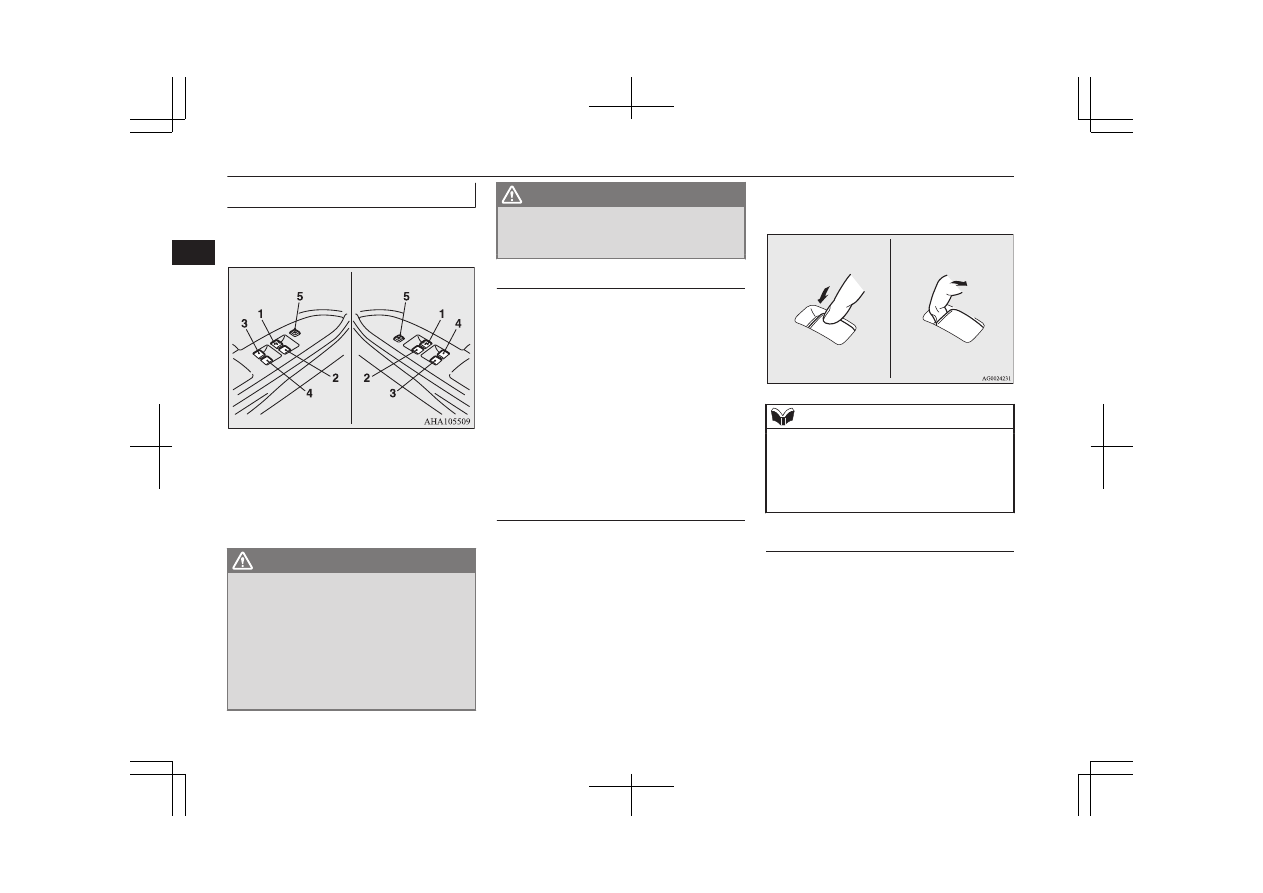Mitsubishi L200 (2018 year). Instruction - part 4

Electric window control switch
E00302303161
Each door window opens or closes while the
corresponding switch is operated.
Driver’s switch
LHD
Driver’s switch
RHD
1- Driver’s door window
2- Front passenger’s door window
3- Rear left door window (Double cab)
4- Rear right door window (Double cab)
5- Lock switch
WARNING
l
Before operating the electric window con-
trol, make sure that nothing can get trap-
ped (head, hand, finger, etc.).
l
Never leave the vehicle without removing
the key.
l
Never leave a child (or other person who
might not be capable of safe operation of
the electric window control) in the vehicle
alone.
WARNING
l
The child may tamper with the switch at
the risk of its hands or head being trap-
ped in the window.
Driver’s switches
The driver’s switches can be used to operate
all door windows. A window can be opened
or closed by operating the corresponding
switch.
Press the switch down to open the window,
and pull up the switch to close it.
If the switch for the driver’s window is fully
pressed down/pulled up, the door window au-
tomatically opens/closes completely.
If you want to stop the window movement,
operate the switch lightly in the reverse direc-
tion.
Passenger’s switches
The passenger’s switches can be used to op-
erate the corresponding passenger’s door
windows.
Press the switch down for opening the win-
dow, and pull up the switch for closing it.
NOTE
l
Repeated operation with the engine stopped
will run down the battery. Operate the win-
dow switches only while the engine is run-
ning.
l
The rear door windows only open halfway.
Lock switch
E00303102361
When this switch is operated, the passenger’s
switches cannot be used to open or close the
door windows and the driver’s switch cannot
open or close any door windows other than
the driver’s door window.
Electric window control*
3-22
OKTE18E1
Locking and unlocking
3